
My own cover design for the book I am completing for NaNoWriMo this month (Nov. 2018). It is based on the cover page of Atalanta Fugiens by Michael Maier.
Today is Nov. 1, 2018 and it is time to begin another year of NaNoWriMo: the National Novel Writing Month program that encourages writers to complete at least 50,000 words during November. I will be splitting my writing over four major projects. The first is to catch up and maintain these blog posts here at Elements Unearthed and at my other post: www.spacedoutclassroom.com, where I have been writing about activities and lessons in astronomy education. My second project is to write a series of lesson plans on STEAM education projects for chemistry classes, which I will report on and share here as well. My hope is to create a collection of 20-30 lesson plans that incorporate the arts and history and publish them through the National Science Teachers Association (NSTA). My third project is to write and illustrate a series of young adult (8-14 year old) fact-based books on exploring the world (and beyond) written from the perspective of fictitious youngsters who experience these adventures. It will be largely based on my own travels. The final project is to complete the first novel in my Trinum Magicum series, which I started for NaNoWriMo last year. This blog will describe that project and other silver linings that came during my job hunt last year.
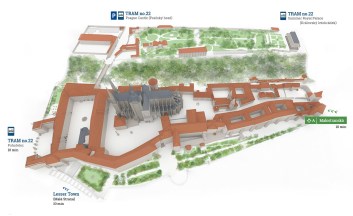
A map of the Hradcany, the castle hill in Prague with St. Vitus’ Cathedral. Most of my novel is based in Prague in 1609 during the time of Emperor Rudolf II.
Upon my return from the Teacher Research Data Conference in Washington, D.C., I was faced again with the challenges of my situation. Just two weeks before, I had been laid off from my teaching position at American Academy of Innovation because of budget problems, and now I had to pick up the pieces and somehow find a new position for myself when the school year was already well underway. My situation seemed pretty cloudy and dreary, but for every cloud there are silver linings. Mine came in the shape of unexpected opportunities to fulfill two of my Bucket List items: to be in a community theater production (more on this in the next post) and to start my long-planned Trinum Magicum book series.
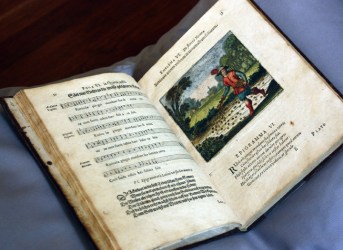
A photograph of Emblem 6 of Atalanta Fugiens, written by Michael Maier and illustrated with engravings by Mathias Merian. The book’s central mystery involves this book, which was perhaps one of the first attempts at multimedia, as it contains illustrations, poems, epigrams, and fugues.
For the first few weeks of October, my priority was to get all of my materials, books, filing cabinets, and papers from AAI put away into my house, as they were all stacked up in my carport exposed to the elements. I had to build a bookshelf, clean out rooms in my house and workshop, and do a lot of sorting and packing, but I finally found a spot for everything. Then I took some time to plan out my goals for the coming weeks as I looked for work. I had to make at least four contacts per week to maintain my unemployment benefits, so that was the top priority. I signed up for quite a few job seeking aggregate sites, went for interviews at Workforce Services, filled out a lot of paperwork, and started applying for jobs.

An illustration of what Prague looked like around 1609. The main Hradcany was on a hill with a steep wall in front. St. Vitus’ Cathedral had only been completed to the transept – the nave wasn’t completed until the 20th Century.
One job opening was for an informal science education director at Clark Planetarium in Salt Lake City, which I thought was an ideal job for me (and me for them). 35 people applied, and I was one of the five chosen for interviews. The interview went well, but I could tell that I didn’t have enough large-scale grant experience for what they wanted. They hired another person who had worked as an educator at a planetarium before and whom I had actually met before at The Leonardo museum in Salt Lake. It was disappointing on top of all the other disappointments, but at least I came close (although close only counts in hand grenades, atom bombs, and horseshoes).
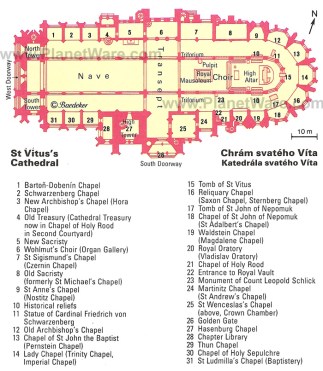
St. Vitus’ Cathedral in Prague as it exists today. At the time of my book, the Choir and Altar and Transept with towers were completed but the Nave was not (until 20th Century), so the cathedral had a truncated appearance.
Feeling down on myself for not getting this job that had seemed so right, I walked to a local bookstore to browse articles on job seeking and just to take my mind off my problems for a while. I picked up a copy of Writers Magazine, and it had an article about a program that encourages people to write novels, a kind of community tracking project called NaNoWriMo, or National Novel Writing Month. The goal is to write at least 50,000 words of a novel in the 30 days of November. It was the fourth week in October when I read this, and I checked out the website and decided to go for it. After all, I finally had the time to complete another item on my Bucket List.
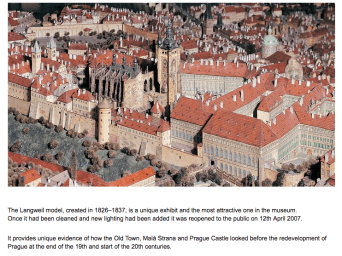
A cardboard model of Prague built in the 1820s-1830s by a man named Langwell. You can see that St. Vitus’ Cathedral is truncated and incomplete, and that the Hradcany castle complex overlooked the old city (Mala Stana) and Vltava River.
I had an idea for a novel that had been simmering in my head for eight years, ever since I spent the summer in Philadelphia at the Chemical Heritage Foundation. It would be a time travel adventure into the history of chemistry as the protagonists searched for clues to an ancient mystery involving that remarkable book by Michael Maier called Atalanta Fugiens. I started doing research into Maier and the history of the book, and found that he had written it shortly after leaving the service of the Emperor Rudolf II of Prague, so I started researching the Emperor as well. He was a remarkable person living in an incredible city and time, full of many story possibilities including the kunstkammer (Cabinet of Curiosities) he collected, the Voynich Manuscript, the Devil’s Bible, enough artists and alchemists and scientists (Tycho Brahe, Johannes Kepler, Anselmo de Boodt, John Dee, Elizabeth Weston, and many others) to provide a rich cast of characters, and backed up by the intrigue of the events leading up to the 30 Years War. And there was that whole business about the Golem of Prague, too. Great stuff!

Prague as drawn by Hoefnagel from the early 17th Century.
So I built a plot up, the first book in a series (I hope), and on November 1st started in on writing the novel. This was my second such attempt, the first being a novella competition sponsored by Tor.com in 2015 where I wrote a 39,000 word novella called Dead Stone Lions in about two weeks. That experience was remarkable in that the story wrote itself – minor characters would take on a life of their own and show up as major story points, and ideas just popped into my head as I wrote it, a process that is often referred to as discovery writing. I barely finished in time and had no time for editing, so of course the novella was rejected. But at least I got a first draft done, and will edit it at some future time.
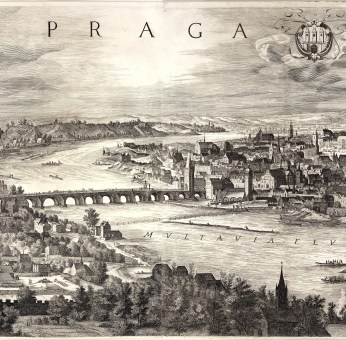
A drawing of Prague in 1606 showing the Charles Bridge across the Vltava River.
For the NaNoWriMo novel, which I titled The Golden Apple, the protagonists discover that Atalanta Fugiens is actually a time machine of sorts. By singing the fugues in the book in three voices (Atalanta, Hippomenes, and the Golden Apple) while holding a crystal, they are able to travel to Prague to the Court of Rudolf II and find themselves in the middle of the machinations of Matthias, the brother of Rudolf who is gradually taking control of the Holy Roman Empire and the Habsburg dynasty. Here is a synopsis I wrote for the book:
In the twisted streets of the Old City, a misshapen monster stomps its way through the fleeing crowd. Jeremy McGowan, science teacher and time traveler, is running for his life . . .

Since my novel is set in Prague in 1609, I have to include a Golem or two. Rabbi Loew, the supposed creator of the Golem of Prague, lived until October 1609.
His fellowship at the Nexus Foundation was supposed to be an escape from the constant reminders of his lost love, not an escape from the legendary Golem of Prague. When he stumbles upon a secret hidden in a remarkable book, Jeremy embarks on a journey with science historians Ankha Zalinski and Benjamin Johnson to the court of Emperor Rudolf II of Bohemia. They hope to solve an ancient puzzle: as a child, Ankha memorized a poem handed down through millennia from her ancestors. It speaks of a Golden Apple, which may be the key to unlocking incredible power.

The first emblem of Atalanta Fugiens, showing Boreas, the God of Winds. In 50 emblems and epigrams, with essays and fugues, Michael Maier laid out the steps needed to achieve the Inner Transformation required to make the Philosophers’ Stone.
Using the legend of Atalanta as their guide, the explorers become the Trinum Magicum, the three alchemical emblems of Paracelsus, on a perilous quest to the past. Pursued by clandestine agents of the Emperor’s brother, Matthias, and hounded by a dark entity from beyond history, they must grapple with the limits of their own humanity. With the aid of Johannes Kepler, Elizabeth Weston, Rabbi Loeb, and other brilliant scholars, they hope to find the Golden Apple, decipher the symbols of a strange manuscript, and prevent a war that will rip Europe apart.

One of the emblems in Atalanta Fugiens, showing a fire salamander. In some books, such as the copy in the Chemical Heritage Foundation in Philadelphia, the first ten emblems have been hand colored to enhance the value of the book.
In this unique tale of historical science fiction, what appears to be magic may simply be a technology beyond comprehension, if only the travelers can find it in time.
I made my goal, barely, with 50,380 words by November 30, although I had to write 7000 words that last day. Since then, I have taken the book on to over 68,000 words and it is now about halfway done. It is a different experience than Dead Stone Lions, as I’ve had to plot it out much more carefully and think through the details of the whole book series in order to lay a good foundation. It even required writing a long poem full of chemical history references. But it is certainly coming along. Now I need to get back to it, with the goal of finishing it up during this 2018 NaNoWriMo so I can edit and submit it by the end of the year. My goal is to write one of these each year. If I do succeed in finishing it, then in December I will work editing and finding an agent or a publisher that wants to print and market it.

This is my progress chart through the month of Nov. 2017. I made my goal of 50,000 words just barely (by 380 words). It required a major sprint of 7000 words on the last day!
We see many space operas, biological science fiction, future tech explorations, and so on but chemistry science fiction is rare. I can only think of Asimov’s The God’s Themselves, which has some chemistry in it (radioactive tungsten, anyone?) but is also about physics, entropy, multiple universes, and space colonization. So I hope my book finds an untapped market, with its references to real alchemists and history and some fascinating mysteries to solve in a remarkable time and place.

My badge for making my goal of 50,000 words.
So there are seldom any challenges we face that do not have some benefits for us, including silver linings and opportunities that we may never have accepted if we weren’t in dire straits. These changes in direction are never voluntary, but they can be for our good. Sometimes you have to look for the windows that open up when the doors are closed in your face. Sometimes they find you, like these two opportunities that dropped in my lap. I am glad I had the courage to accept them.
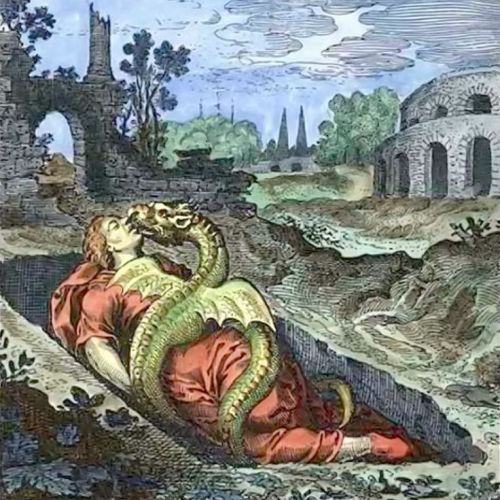
Emblem 50 from Atalanta Fugiens, another enigmatic symbol. Reading through the translations of the Latin and German epigrams and discourses doesn’t help all that much for understanding the book. Maier wrote in symbolic language that used many of the ideas behind Rosicrucianism. It will take me years to write all the books; maybe by the time I’m done I’ll have a clearer idea of what he was trying to say. Or maybe not . . .